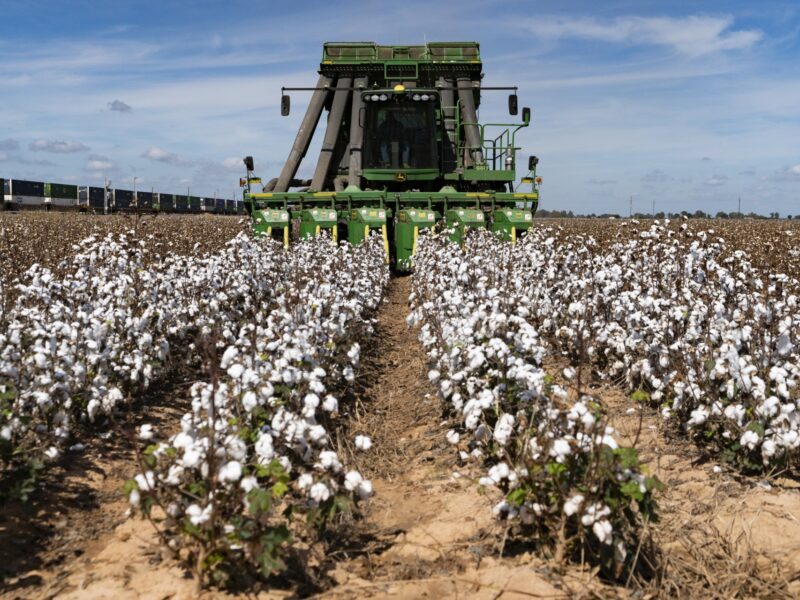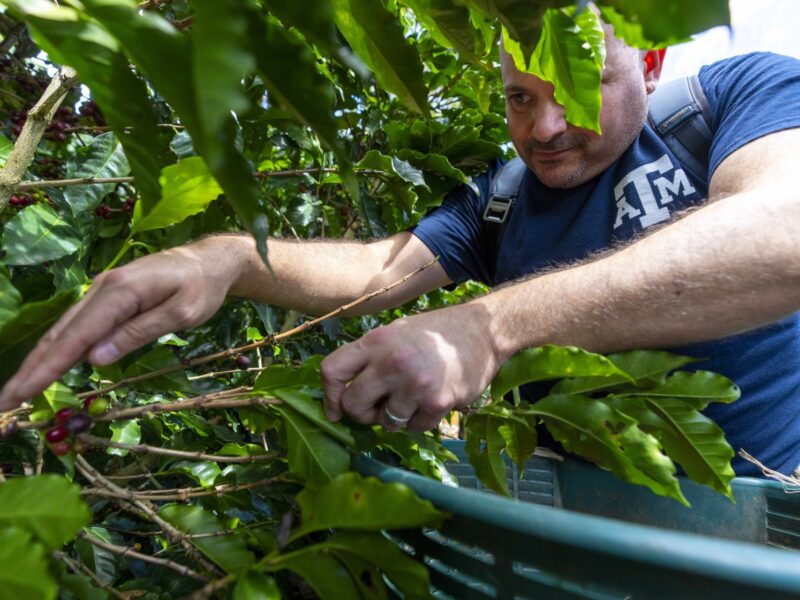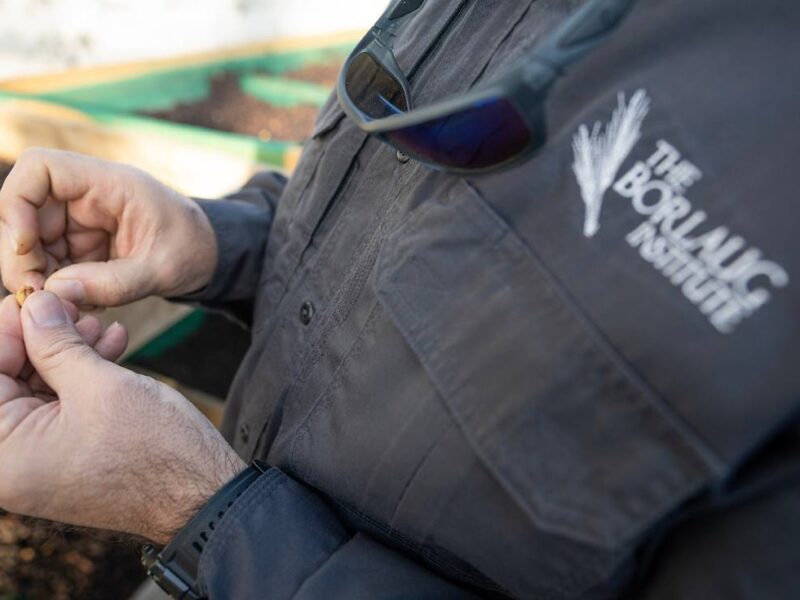Rethinking The Field
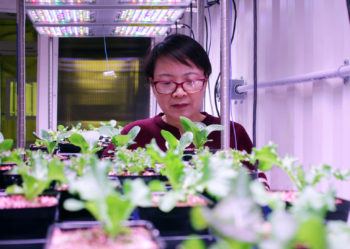
A living, vertical salad bar in the employee break room is more than just a novelty at the Texas A&M AgriLife Center at Dallas. It is a small, and delicious, sign of the comprehensive urban agriculture research ramping up at the center in 2020.
The purple-glowing installation arrived at Dallas with Genhua Niu, a Texas A&M AgriLife Research professor of controlled environment agriculture. Her research team represents one component of an overarching push by Texas A&M AgriLife to realize sustainable production of nutritious food within cities — the next frontier in commercial agriculture.
Niu’s research is in urban horticulture. This can conjure images of community and backyard gardens, or rooftop and balcony plant installations, but her focus is producing quality food in controlled environments. Her studies are especially relevant in Dallas — of which certain communities are urban food deserts — and they carry promising implications for agriculture industries across rural Texas, too.
“AgriLife’s substantial investments in urban agriculture innovation reflect our commitment to better human nutrition and health at every interval along the food supply chain,” said Patrick Stover, vice chancellor and dean of Texas A&M’s College of Agriculture and Life Sciences and director of AgriLife Research. “In addressing these obstacles, we can bring to bear the considerable research and extension resources of the Texas A&M University System.”
Bringing urban horticulture to Dallas
Niu comes to Dallas from the AgriLife Center at El Paso, where her work since 2004 hinged on research conducted in varying greenhouse settings. Now, controlled environments at the renovated urban center at Dallas allow her to direct innovation toward vertical farming systems housed fully indoors.
Niu earned her doctorate in horticultural engineering at Chiba University in Japan as controlled environment agriculture there gained momentum in the 1980s. The research area has seen rapid growth in recent years on the heels of climate change concerns and increasing limitations of global open-field production.
Greenhouses, the focus of much of Niu’s research to date, also pose obstacles to agricultural economics and environmental sustainability.
Niu said plants utilize about 43% of sunlight to grow; the surplus becomes heat. And glass and clear plastics — typical greenhouse covers — can make temperature control difficult during harsher outdoor conditions. Consequently, these systems require energy-intensive heating and cooling in winter and summer.
“There are still problems to economic feasibility, like very high upfront investment and operational expenditures,” Niu said.
But opportunity for controlled environment agriculture, or CEA development, is ripe across Texas.
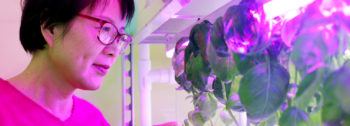
On the horizon: Seedlings
For example, she said, many open-field crop producers — who comprise the majority of Texas farmers — acquire transplant seedlings from out-of-state sellers who grow them in controlled environments. Valuable Texas examples include tomato and pepper transplants produced in winter. Dollars for out-of-state seedlings might be kept in Texas down the line by bolstering the state’s own urban production capacity, and by delivering emerging knowledge to farmers and urban upstarts via the Texas A&M AgriLife Extension Service.
On the practical side of implementation, Niu said, “In my opinion, it would be easier to do in Texas because we have high temperatures, which means lower heating costs in winter than northern states.”
Better technology: Controlled environment agriculture
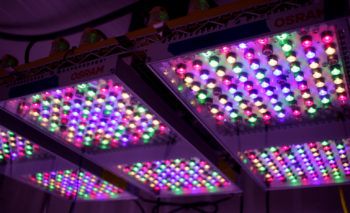
She also seeks opportunities for improving controlled environmental agriculture technology.
“How can we design lighting systems in a way that the plants use most efficiently?” she asked. “How do we use less energy and produce more lumens? Can we reduce labor costs through automation? Do we need to heat the whole greenhouse or just the nutrient solution? How do we control temperature efficiently while improving quality and productivity?”
These are the questions her team works to answer in Dallas. Niu’s research in Dallas over the next year aims to expand emerging knowledge in these areas. Her laboratories now house controlled environment studies of leafy greens, and she will pursue future research on specialty greens, pharmaceutical-grade plant production and a range of other controlled environment agriculture systems.
“It is a field of innumerable possibilities,” Niu said.
Find urban horticulture program information, a curriculum vitae and listing of Niu’s publications at the Dallas Center’s website.
This article by Gabe Saldana originally appeared on AgriLife Today.
